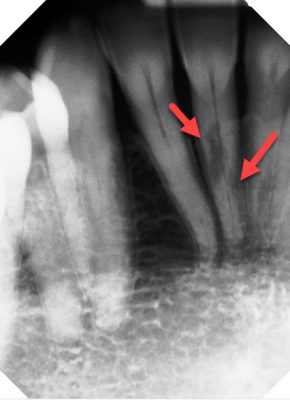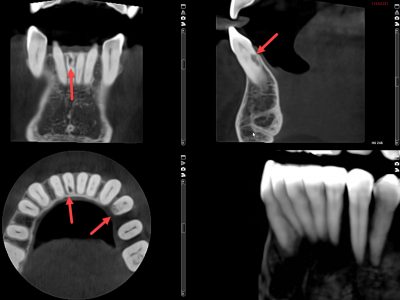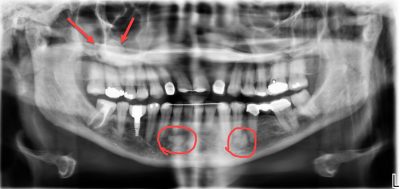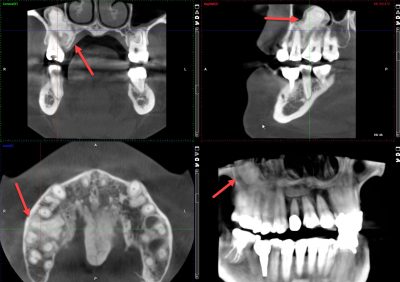CT Scan/CBCT
What is a CT Scan?
A CT Scan (also known as a “CAT Scan”) is a special type of 3D imaging. We use it to see parts of the jaws and mouth that a regular digital x-ray doesn’t show.
We normally think of CT Scans as something a physician looks at. For along time, CT machines were too expensive or too big for dentists to purchase, but they’re finally getting smaller and more affordable. We purchased a Planmeca ProMax 3D + 2D CT machine in Jan. 2018, and I don’t know how I practiced without it before! 3D imaging provides incredible levels of detail and information. Below are some images of patients (anonymous of course), with conditions that a normal x-ray didn’t show well.
When would I need a dental CAT Scan?
There are a number of situations where a CAT scan or a CBCT is used; the list below gives a few examples:
- To see the position of the teeth before wisdom tooth extractions
- To determine if there is enough bone for an implant to be placed
- To check around the roots of teeth for any infections or anomalies
- To find missed root canals
- To see jaw pathology, such as bone tumors, cysts, etc.
3D CT Scans Show More Detail than 2D X-rays
CT scans create a complete 3-dimensional image. That image can be rotated and scanned through forward and back, left-to-right, and top-to-bottom. This allows us to see so much more. Check out the below examples of how much more we can see.
Root Resorption
Sometimes cells in a tooth’s nerve canal, or cells in the ligament around a tooth root, start eating away at the root. It’s called root resorption. The first image below is a normal periapical x-ray (or “PA”), while the second shows different slices of the 3D CT scan. The different views available from the cone beam provide so much more information about the size, shape, and severity of the problem area. From them, we know the tooth isn’t a root canal candidate and must be extracted.
3D X-rays of Jaw Cysts & Tumors
A 2D x-ray, such as the panoramic x-ray seen below, shows several areas of things that shouldn’t be there. The 3D CT scan revealed more about the size, shape, & extent of those areas, so we knew the patient needed to see an oral surgeon.
- A panoramic x-ray showing several areas of concern,
Bone Height and Width for Dental Implants
A 2D x-ray shows how tall bone is, but it can’t tell us how wide or dense the bone is. All of that is important information before we place a dental implant.
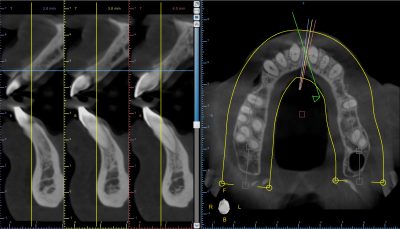
3D CT x-ray showing bone width & height for dental implants
As you can see, there’s just no comparison between a 3D CT scan and a normal 2D x-ray.
Give us a Call or Request an Appointment
for a Comprehensive or Emergency Exam.
It’s that easy to start.

